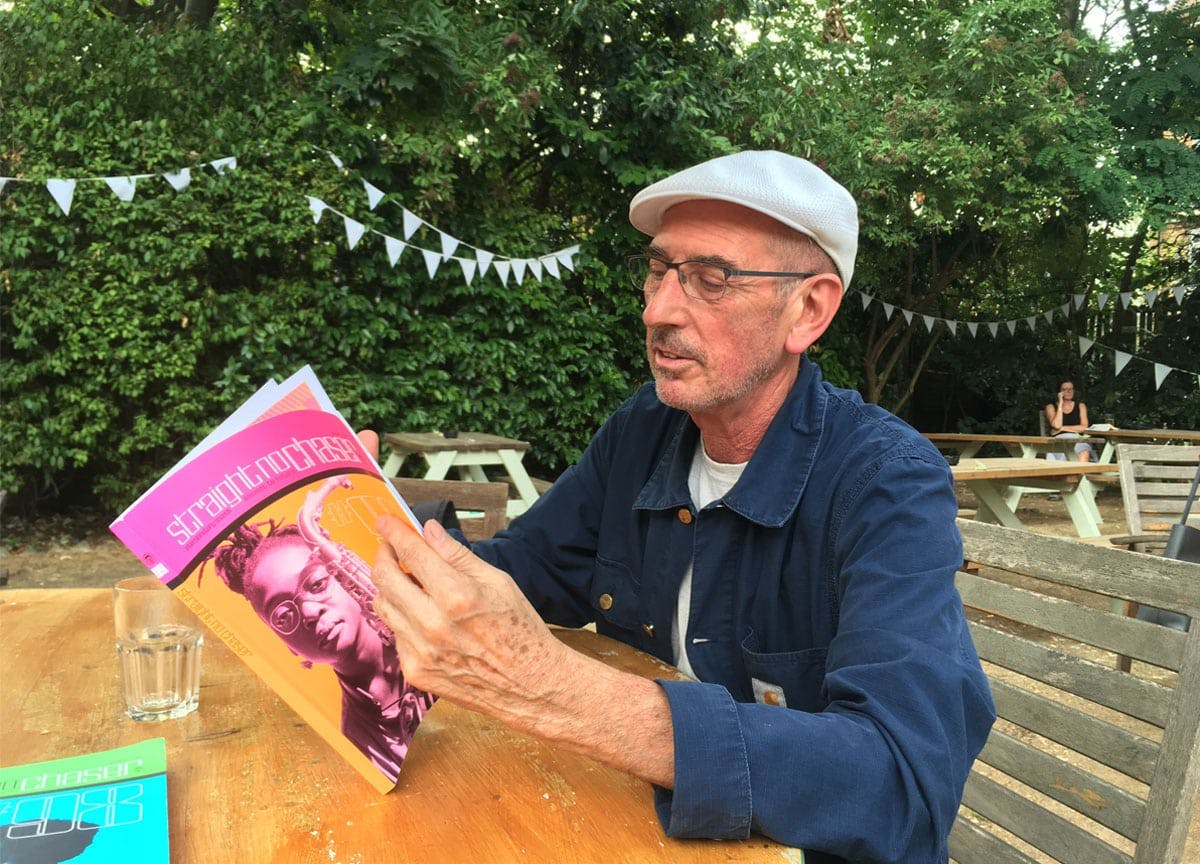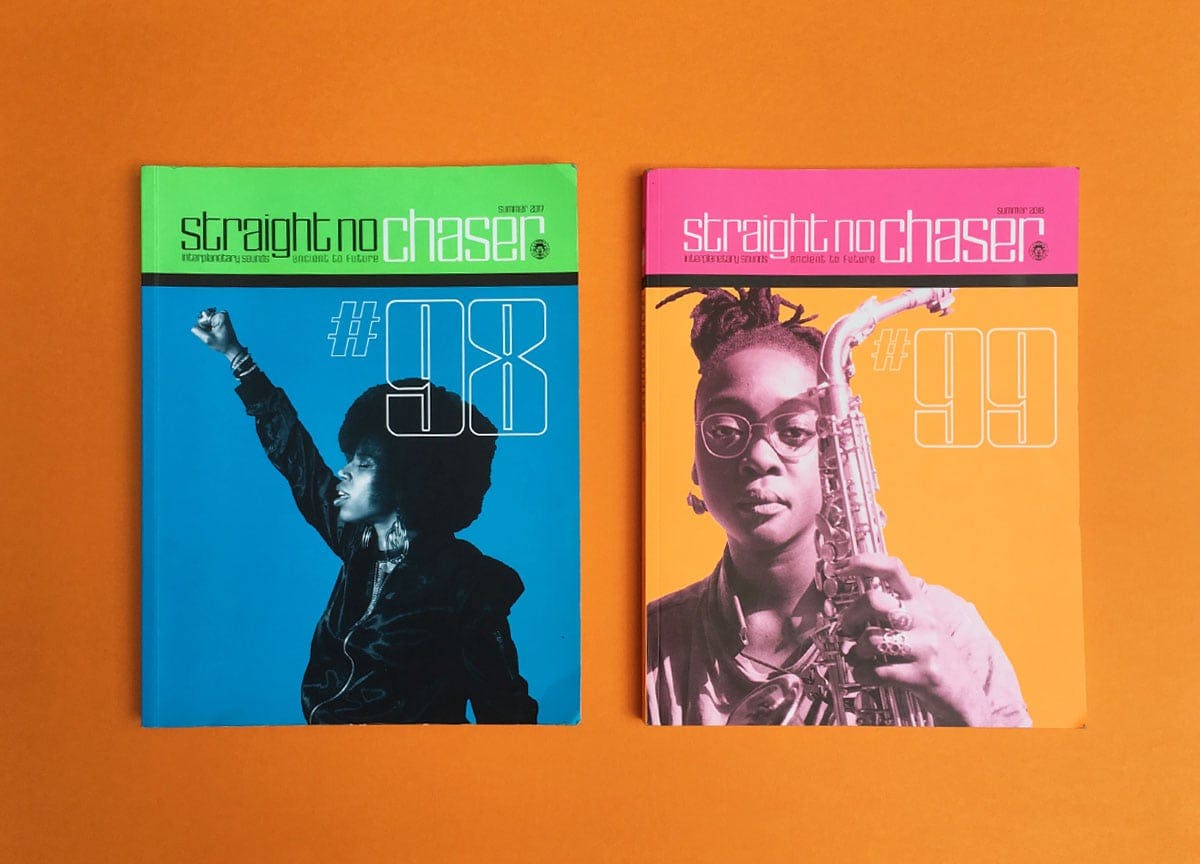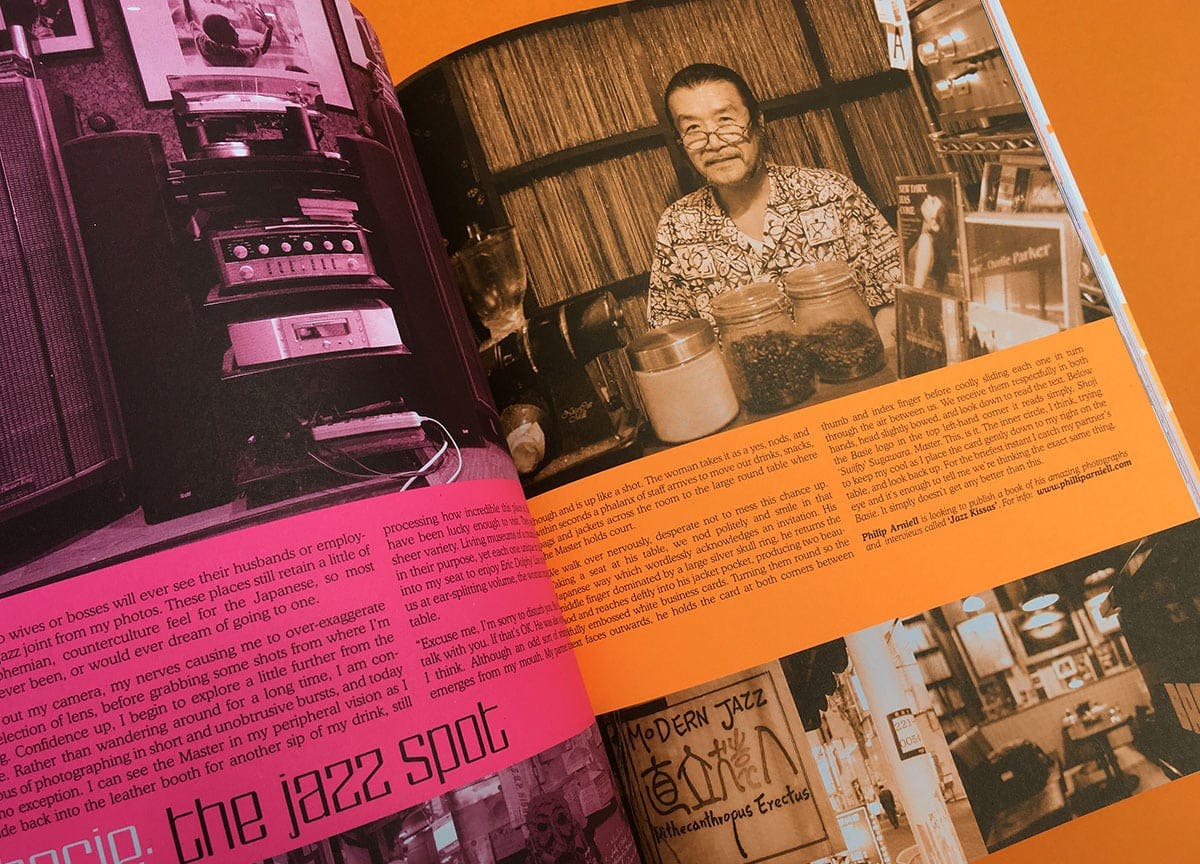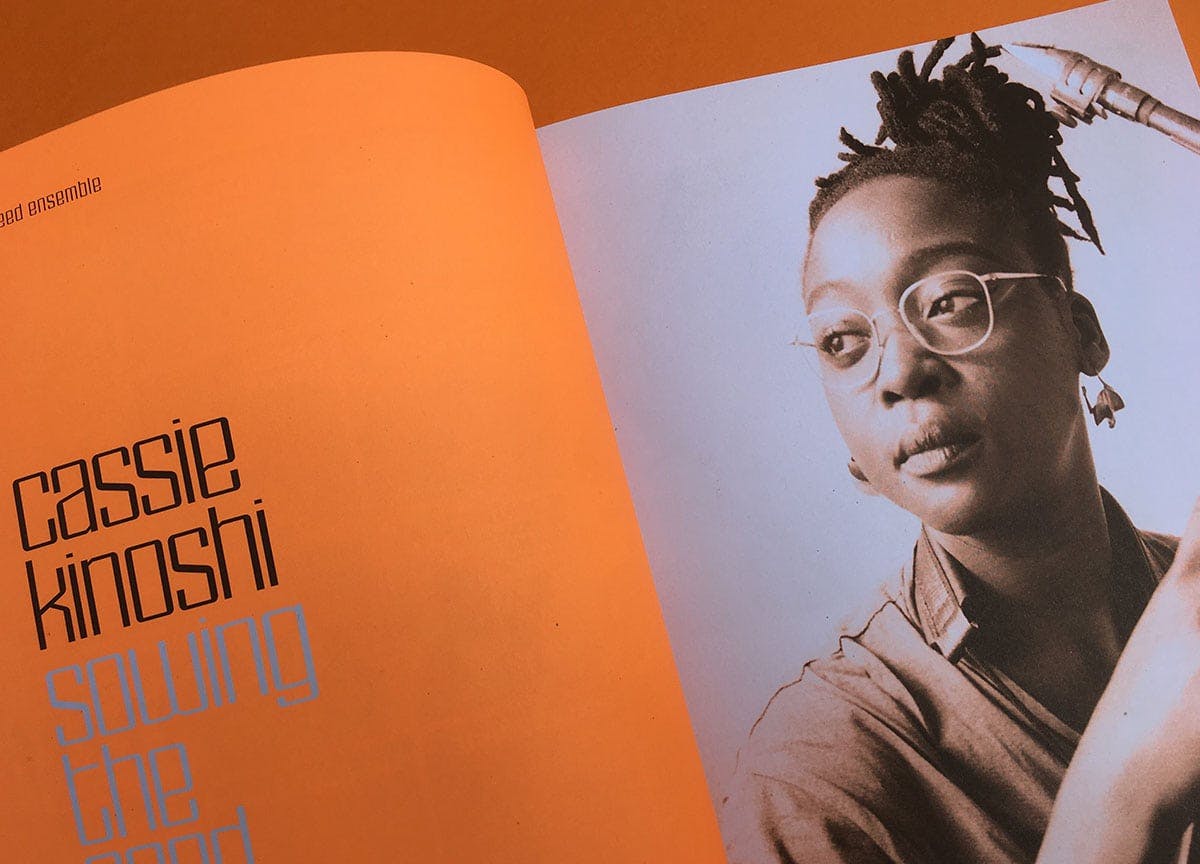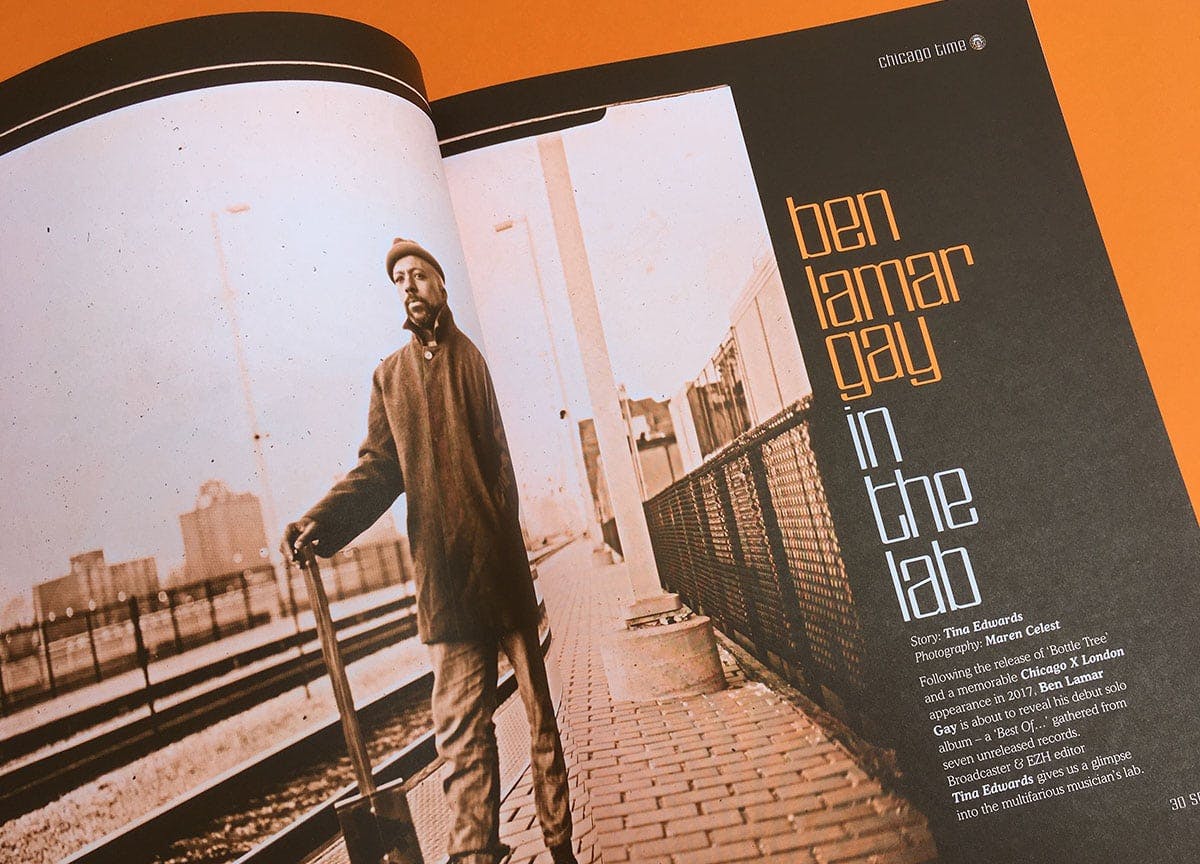Ancient to future: Interplanetary sounds in Straight No Chaser magazine

I had heard a lot about Straight No Chaser magazine from independent publishers around us. Magazines like The Move waxed poetic about it as a relic of London’s music scene in the 90s, something that had a profound influence on them and became a major impetus behind their own publishing ventures. But it wasn’t until I held a copy of issue 98 in my hands — the first of their re-launched editions, after a 10-year hiatus — that I understood the power of its storytelling. Even though it was founded almost three decades ago, every musician, collective and movement they wrote about is as relevant as ever to the communities around us today.
Taking its name from the 1967 album from jazz pianist Thelonious Monk, Straight No Chaser champions ‘interplanetary’ sounds: from the ancient to the future, it travels along the connections between the music created by the African diaspora — that’s jazz from a feminist London collective, house and techno from a club night in Brooklyn, Samba from a Brazilian singer, and everything in between. This two-toned reincarnation of the magazine was designed by Ian Swift, one of the original staff, who also worked on The Face. I sat down with editor Paul Bradshaw last week to talk about self-publishing, Hackney in the 90s, and his plan for issue 100.
For those who aren’t familiar with Straight No Chaser, could you give us a rundown of how it started?
We started in ‘88, and basically, I’d been writing for quite a long time before that, about music. I wrote for the NME, bits for The Wire, and various other publications. And there was a certain point I just thought, no one was writing about what we were interested in — a sort of connection between music of the African diaspora. So it would have been anything from jazz to hip-hop to African music generally, Senegalese, Congolese, South African music, as well as Latin music.
So that was the kind of mix that we were looking to do, but it was pretty much also based around what people were playing in various clubs, so what Gilles Peterson would have been playing back then (we did pirate radio together during that period of time). Dingwalls was happening around that time, Talking Loud as a label was starting, Acid Jazz records was starting, so there was quite a lot of people doing it for themselves. So I started Straight No Chaser in the summer of 88, and I did 1000 copies.
For the first issue?
Mhm. And we pretty much sold it on the doors of clubs and distributed around various record shops, and everything was done by hand, a bit like this [current] one, you know what I mean? We kind of did alright, people seemed to dig it, and in a way it became a kind of voice for a community, a hub, around which the community could evolve.
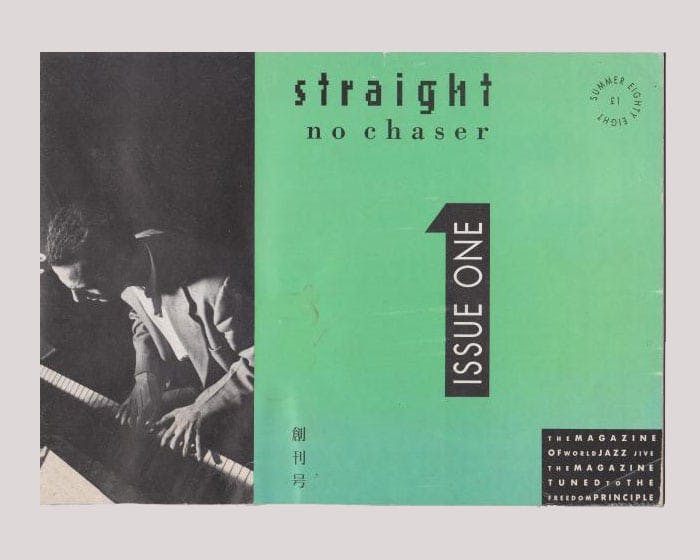
What was the design like?
Well the format was lengthwise, so it was kind of based on the original i-D, the first i-D magazines were oblong, and it took us a couple of issues to sort out designers. We started off with one designer, who, basically, we got him to design it because he had a Mac. There were about three Apple Macintoshes in London, and he had one of them.
Did this start as a side thing? Did you still have to hold onto your day jobs?
Not really, when I started the mag I just thought “That’s it, I’m just gonna work on the mag now.” Initially we did it from the back room of my flat, and it got to the point where we actually needed a proper space, so we found a space in Coronet St in Hoxton. I think it was one of the first buildings to be done up in the old streets around there, cause at that time, it was a real run-down dump. And Neville Brody, who worked on The Face and Arena, his studio was in East Row, so we were still able to go over and borrow his Mac with the big screen. And we’d go there at the weekend when no one was there, and we’d work all weekend on the magazine ’til the heaters ran out.
And then why did it stop publishing?
Well, the short answer to that is the internet. Around 2007, when the White Cube gallery opened, rents went up, and we left Hoxton and went to London Fields. I was in London Fields for quite a while, we had our own building, some people were employed, and then basically when the internet began to kick in, I think the advertisers suddenly thought, “Why are we paying this kind of money to a little magazine when we can put something on the internet?” So suddenly, what people wanted to offer you for an ad halved, and that just didn’t work. So you know, that was difficult and at that point we just had to make a pragmatic decision.

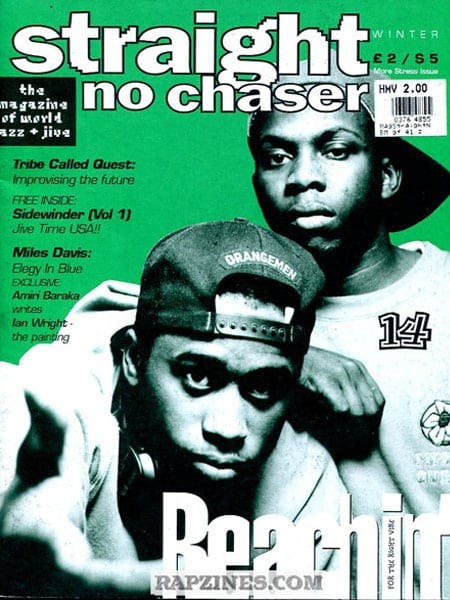


So you stopped for 10 years.
So I had my own little online journal and I wrote for other people and curated events and stuff like that, and then a guy who was a subscriber, as it goes, who’s got money, came to me and said “Look, I can give you a bit of money, not to produce a magazine but to research whether it’s viable now.”
So I did a bit of research, and I thought, I’ll do 1500 copies, if I can cover my print cost with ads — the print bill would have been £5500 — if I’m not gonna lose any money, then we’ll just go for it. So I just went to all my friends and all the people I know who have got little record shops, and small labels and we were just about able to cover the costs.
Yeah, and it sold out.
Yeah it sold out in probably three weeks.
Which is mad!
Which is mad, I was not prepared, I just did it via a Bigcartel shop, and so suddenly I just had all these orders come in, and I virtually wrote out all the envelopes by hand, I didn’t even have a little printer to print out the labels. I ended up mailing out 1000 magazines in two and half weeks.
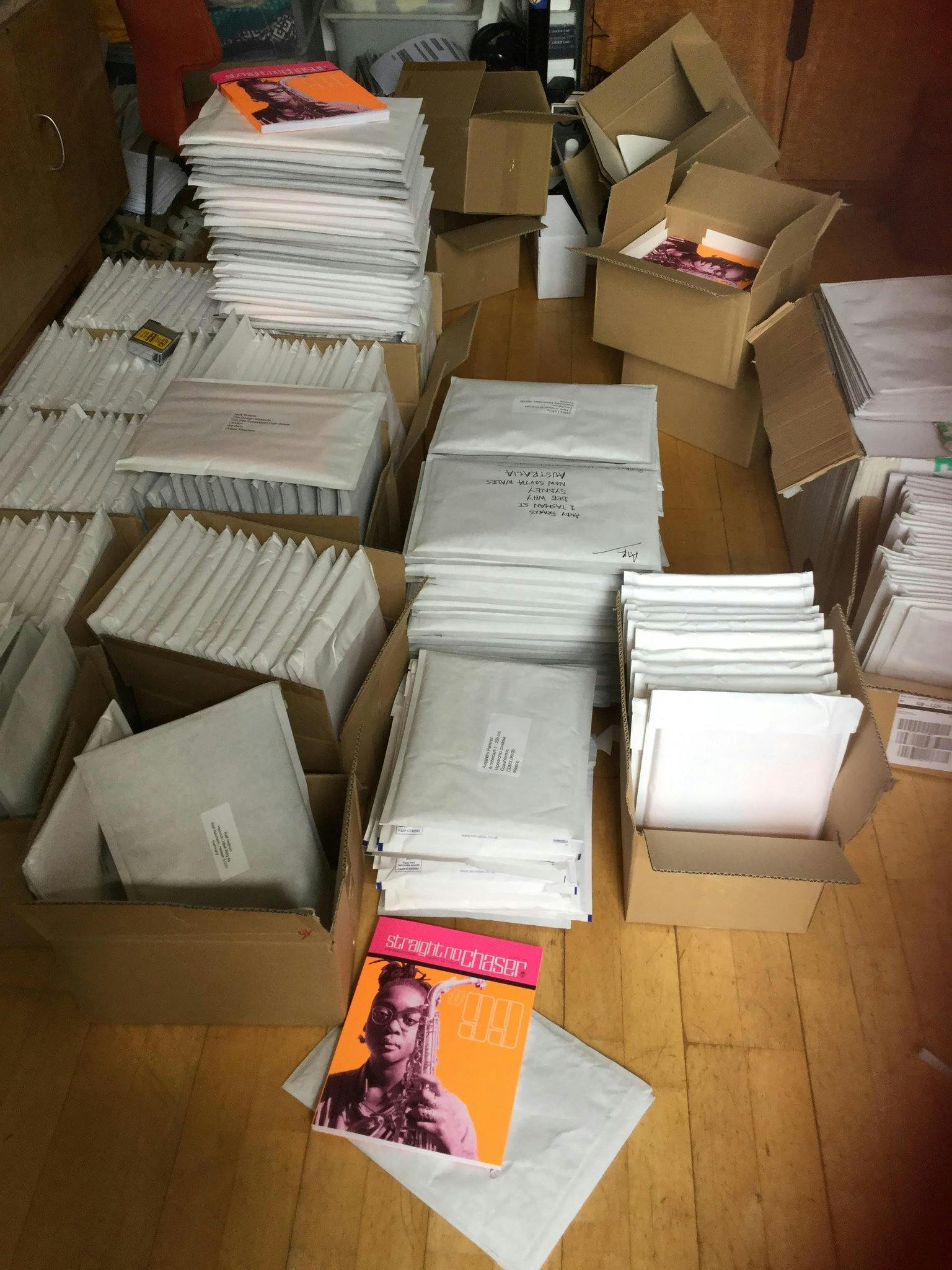
The writing in both issues is incredible. Where do you go to seek out your contributors?
The new generation I had to get to know, and obviously my first priority in restarting the magazine was to find a group of young writers, as well as keeping some of my older, more experienced people, who were still into the music. So I was going out there locating new writers, I also wanted writers who were coming out of the different communities as well — it was important for me to have young black writers.
In reality, over the years, I don’t think I ever really turned anyone away who’s come to me, and I had an endless stream when I was in Hoxton Square, of young people who came, some of them were maybe on placement in college, and I would just send them off to go on concerts. Then I’d get other people come to me, who maybe weren’t that good, but I’d still send them off on a little mission, get them to review something, maybe help them with their writing.
I was listening to SNC contributor Teju Adeleye’s show on NTS, and you guys were talking about how it’s important to examine music’s purpose in society, and I think that’s what really sets the magazine apart from other music titles out there.
The nature of the digital age, as it stands right now, is that we’ve got a huge amount of information at our fingertips, but we don’t necessarily have a great deal of depth when it comes to looking at music. When we decided to do this generation of issues, we thought we were quite happy to do long reads, where people could go deeper into the music and explore different aspects of it.
I mean it’s funny, I read a little post on Facebook today from Cassie Kinoshi, who’s on the front cover [of issue two], and she put a post up having a go at white jazz musicians who seem to refuse to acknowledge the context of the music that they’re playing. And that’s an issue.
What’s a night that everyone should go to at the moment?
Church of Sound, it’s a good one.
What is an advice you can give to people who are starting their own magazines?
I think having a bit of a clear idea of what you want to do. Also, it’s kind of like building a team, building a crew, so before we do an issue I’ll get everybody together and we’ll all sit down and chuck a bunch of ideas around. The first time I ever did this one, in the initial get-together I bought tickets for a film that was on at the ICA for everybody, and then we all went to the bar afterwards and just got to know each other. And I think people become friends for life.
What can we expect for issue 100?
So it was 30 years from when we started the magazine; it’s a long time, a lot of music, a lot of print under the bridge. People are asking if we’re gonna do the hardback book and all that business. And I’m not really feeling it, cause I think it wouldn’t reach the people I’d want it to reach — it’d be too expensive.
So I’m thinking 100 will be more than one volume, maybe two or three volumes, cause the things is, the archive is not on the web. So that gives me the opportunity to go into the archive and remix classic interviews that don’t date. We got an interview with Pharaoh Sanders, Mccoy Tyner who used to play with John Coltrane, Tom Waits, there’s loads. And great photos — I’m still friends with all the photographers, and I think it would be a challenge to try and redesign some of the spreads, but it might be worth a punt, you know? It’ll be fun.
straightnochaser.bigcartel.com
instagram.com/straightnochaser_mag
